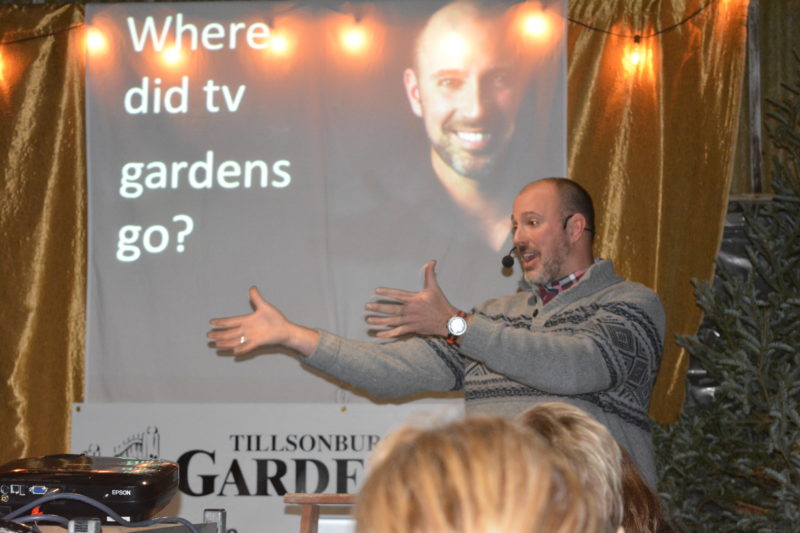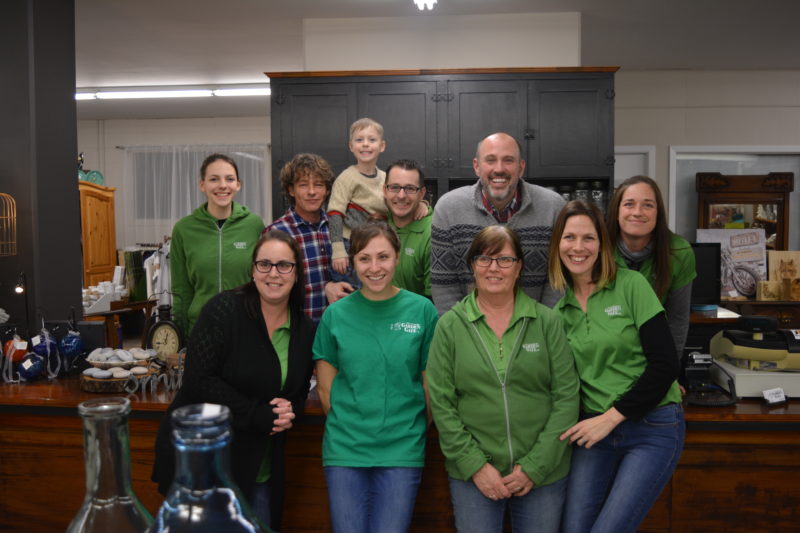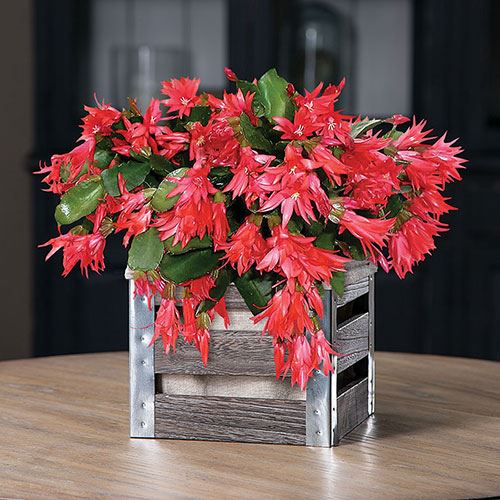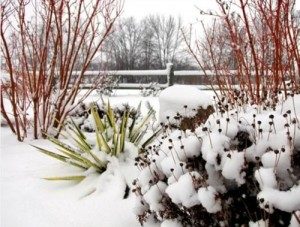It’s Still Just Dirt, The Tillsonburg News – March 2018
By Angela Lassam
In a recent event at Tillsonburg Garden Gate Carson Arthur reminded gardeners that they can be the teachers for the future. Experience can be more useful than any form of media alone. Are you looking for a pastime to interact with your family, learn something new and get some reward in return? Gardening could easily fill this gap.
Some of you may have a new home and will be looking for ways to enhance your outdoors or you may be interested in knowing what is in your food and want to grow it. Most parents would like their children to know more about their environment. This can be done through gardening when learning about the insects, birds and plants (both weeds and flowers) around them. It can become a way of socializing in your neighborhood and creating new friendships through a common interest. Many grandparents and neighbors are gardeners and would be eager to share their knowledge and maybe even some plants and there is usually a story that goes with it. Gardening is a good outdoor activity for all family members and can feed the curiosity to know more about all that is directly or indirectly connected to it. Children are naturally curious and may become our future gardeners.
A simple way to do some gardening is to get children involved in a gardening program. The Tillsonburg Horticultural Society has had a Junior Gardeners program for over 30 years. Many parents have participated in the past. There have been many program co-ordinators – Chris Balazs, Ilene Chesterman and Marion Weeks to name a few and in recent years Judi Misener (2011-2013) Juley Van Daalen (2014-2016) and presently Chris Suttie (2017 –present). She starts her task as early as February ordering seeds and plants, preparing bags for seeds, and forms for the children. Any child from the age of 4 to 14 years old who lives in Tillsonburg and surrounding area can participate. Forms go out to all the schools and other locations at the beginning of April.
The theme this year is ‘Salsa & Salads’. A volunteer group then get together to prepare the kits for them. Deadline for registration is April 23rd this year. Complete gardening kits (seeds, bulbs and plants with all necessary instructions) are delivered in mid May to the schools for pickup. Arrangements are made for other children that are home schooled.
A group of society volunteers receive a list of gardens to be judged and at the end of July/August the gardeners will be contacted for judging. Then there will be a Pizza Party in September for all participating gardeners for awards and certificates. Gardens are usually photographed and displayed at the party for all to see and admire. It is usually a fun time for both children and families. Anyone who is interested in this program can contact Chris phone# 5196880588 or cell# 5195505951 alternately email: suttiekc@sympatico.ca for further information.
Now is the time to think ahead to the Garden Auction on Tuesday, May 15th @ 6.30pm Tillsonburg Community Complex. Members who enjoy making crafts I hope you are working on some interesting items for this upcoming event. Anyone who starts seeds can help towards the many plants needed to fill the auctioned arrangements. All contributions go to make this event a success so please consider doing something towards it.
The next monthly meeting for the Tillsonburg Horticultural Society will be on Tuesday, April 3rd @ 7.30pm in the Senior Centre Auditorium Tillsonburg Community Complex. The speaker is Denise Huck from Colour Paradise Greenhouses, Mannheim talking about gardening trends for 2018. Everyone welcome. Non-members $2 per meeting or join for extra benefits. Visit us on our website at www.tillsonburghorticultural.ca or Facebook Tillsonburghorticultural for up to date news.



